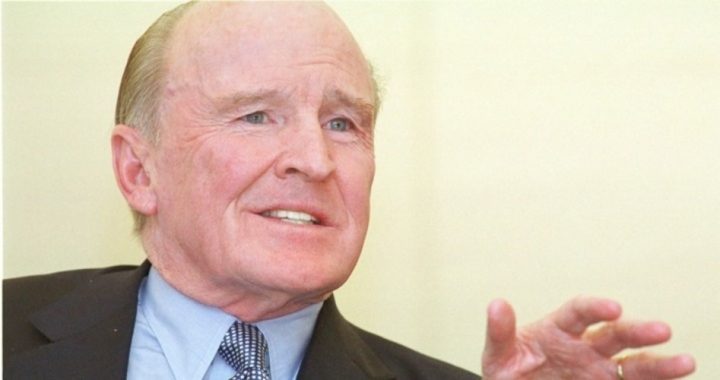
U.S. unemployment slid from 8.1 percent to 7.8 percent in September, according to the Bureau of Labor Statistics (BLS), giving the Obama campaign ammunition to tout job growth right before the November election. But as soon as the numbers were released, critics asserted a slew of criticisms over the BLS report, claiming the numbers were cooked to favor the president’s plot for reelection.
On the heels of the BLS’s September jobs report, conservative commentators and lawmakers voiced their opinion on the data, claiming the alleged 0.3-percent drop in U.S. unemployment was doubtful. “Jobs #s from Labor Secretary Hilda Solis are total pro-Obama propaganda — labor force participation rate at 30-yr low. Abysmal!” charged conservative radio host Laura Ingraham in a Twitter message. Outspoken Rep. Allen West (R-Fla.) also piled on, posting on Facebook his impression that “Chicago style politics is at work” with regard to a “manipulation” of the employment data.
Of course, one of the BLS’s most contentious critics was Jack Welch, former chairman and CEO of General Electric, who Tweeted shortly after the jobs report was published, “Unbelievable jobs numbers … these Chicago guys will do anything … can’t debate so change numbers.” Writing for the Wall Street Journal, Mr. Welch asserted October 10 that his initial conclusions were in fact valid, that “the 7.8% unemployment figure released by the Bureau of Labor Statistics last week is downright implausible.”
National unemployment data is compiled over a one-week period by census workers, mostly by phone contacts, and the rest through home visits. All in all, the BLS attempts to contact 60,000 households, laying out a series of questions and documenting the responses. However, Welch notes:
Some questions allow for unambiguous answers, but others less so. For instance, the range for part-time work falls between one hour and 34 hours a week. So, if an out-of-work accountant tells a census worker, “I got one baby-sitting job this week just to cover my kid’s bus fare, but I haven’t been able to find anything else,” that could be recorded as being employed part-time.
The possibility of subjectivity creeping into the process is so pervasive that the BLS’s own “Handbook of Methods” has a full page explaining the limitations of its data, including how non-sampling errors get made, from “misinterpretation of the questions” to “errors made in the estimations of missing data.”
In August, participation in the U.S. workforce plunged to 63.5 percent — the lowest since September 1981 — which in turn has led to a more favorable unemployment rate. Welch argues that the 0.2-percent drop in the August jobs report contributed directly to this assumption, that a lower labor-force participation rate boosts national employment numbers.
Meanwhile, the BLS asserted that in August and September, federal, state, and local governments added 602,000 jobs, the largest two-month increase in more than two decades. Moreover, the BLS claimed that overall 873,000 jobs were created in September, the largest one-month increase since 1983.
“These three statistics — the labor-force participation rate, the growth in government workers, and overall job growth, all multidecade records achieved over the past two months — have to raise some eyebrows,” Welch suggests. “There were no economists, liberal or conservative, predicting that unemployment in September would drop below 8%.”
An interesting aside to the debate over how many jobs have been created under the Obama administration is the question of what kinds of jobs have been created. A study released by the National Employment Law Project discovered that although more than half of the jobs lost from the first quarter of 2008 through the first quarter of 2010 were “mid-wage occupations,” the overwhelming majority of jobs generated under the Obama administration from the first quarter of 2010 through the first quarter of 2012 were “lower-wage” jobs. Among the study’s findings:
• Lower-wage occupations constituted 21 percent of recession losses, but 58 percent of recovery growth.
• Mid-wage occupations constituted 60 percent of recession losses, but only 22 percent of recovery growth.
• Higher-wage occupations constituted 19 percent of recession job losses, and 20 percent of recovery growth.
• Since the first quarter of 2001, employment has grown by 8.7 percent in lower-wage occupations and by 6.6 percent in higher-wage occupations.
• By contrast, employment in mid-wage occupations has fallen by 7.3 percent.
Considering this, and the fact that droves of unemployed Americans have resorted to part-time work — resulting in better unemployment numbers — it’s no surprise the Obama campaign is scrambling to tout the BLS’s latest jobs report as a victory for the U.S. economy.
The BLS even acknowledged this notion: “These individuals were working part time because their hours had been cut back or because they were unable to find a full-time job.” That applied to the 582,000 new jobs alleged by the September report. This most certainly explains the plunge in mid-wage jobs and the spike in low-wage jobs.
In an editorial published last weekend, the Wall Street Journal summed up how the rush to part-time work — because full-time work remains so scattered — is a severe impediment to the American dream:
Working part time is certainly preferable to not working at all, but it’s tough to pay the mortgage, energy, medical and grocery bills with a 20-hour-a-week job. The job market has been bad for so long that people are settling for any paycheck they can get. One suspect in this shift to part-time work is the cost of providing health insurance, especially with ObamaCare looming.
Photo of Jack Welch: AP Images



